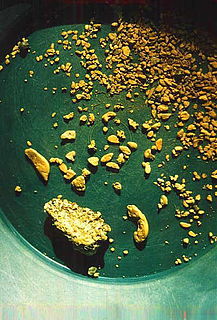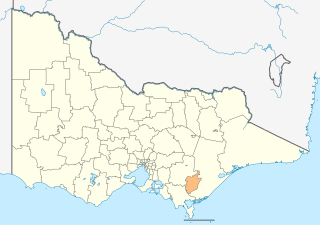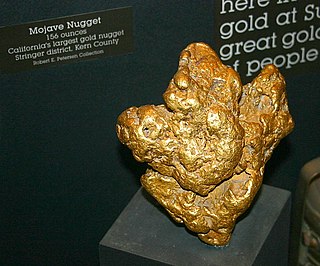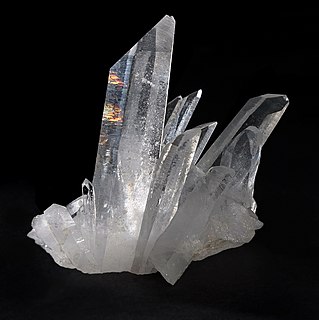
Crystallography is the experimental science of determining the arrangement of atoms in crystalline solids. The word "crystallography" derives from the Greek words crystallon "cold drop, frozen drop", with its meaning extending to all solids with some degree of transparency, and graphein "to write". In July 2012, the United Nations recognised the importance of the science of crystallography by proclaiming that 2014 would be the International Year of Crystallography. X-ray crystallography is used to determine the structure of large biomolecules such as proteins. Before the development of X-ray diffraction crystallography, the study of crystals was based on physical measurements of their geometry. This involved measuring the angles of crystal faces relative to each other and to theoretical reference axes, and establishing the symmetry of the crystal in question. This physical measurement is carried out using a goniometer. The position in 3D space of each crystal face is plotted on a stereographic net such as a Wulff net or Lambert net. The pole to each face is plotted on the net. Each point is labelled with its Miller index. The final plot allows the symmetry of the crystal to be established.

Mineralogy is a subject of geology specializing in the scientific study of the chemistry, crystal structure, and physical properties of minerals and mineralized artifacts. Specific studies within mineralogy include the processes of mineral origin and formation, classification of minerals, their geographical distribution, as well as their utilization.

The mineral pyrite (/ˈpaɪraɪt/), or iron pyrite, also known as fool's gold, is an iron sulfide with the chemical formula FeS2 (iron(II) disulfide). Pyrite is considered the most common of the sulfide minerals.

In crystallography, crystal structure is a description of the ordered arrangement of atoms, ions or molecules in a crystalline material. Ordered structures occur from the intrinsic nature of the constituent particles to form symmetric patterns that repeat along the principal directions of three-dimensional space in matter.

Cubic zirconia (CZ) is the cubic crystalline form of zirconium dioxide (ZrO2). The synthesized material is hard, optically flawless and usually colorless, but may be made in a variety of different colors. It should not be confused with zircon, which is a zirconium silicate (ZrSiO4). It is sometimes erroneously called cubic zirconium.

The Great Exhibition of the Works of Industry of All Nations or The Great Exhibition, an international exhibition, took place in Hyde Park, London, from 1 May to 15 October 1851. It was the first in a series of World's Fairs, exhibitions of culture and industry that became popular in the 19th century, and it was a much anticipated event. The Great Exhibition was organized by Henry Cole and by Prince Albert, husband of the reigning monarch of the United Kingdom, Queen Victoria. Famous people of the time attended, including Charles Darwin, Samuel Colt, members of the Orléanist Royal Family and the writers Charlotte Brontë, Charles Dickens, Lewis Carroll, George Eliot, Alfred Tennyson and William Makepeace Thackeray.

The Reed Gold Mine is located in Midland, Cabarrus County, North Carolina, and is the site of the first documented commercial gold find in the United States. It has been designated a National Historic Landmark because of its importance and listed on the National Register of Historic Places.

In crystallography, the terms crystal system, crystal family, and lattice system each refer to one of several classes of space groups, lattices, point groups, or crystals. Informally, two crystals are in the same crystal system if they have similar symmetries, although there are many exceptions to this.

A gold nugget is a naturally occurring piece of native gold. Watercourses often concentrate nuggets and finer gold in placers. Nuggets are recovered by placer mining, but they are also found in residual deposits where the gold-bearing veins or lodes are weathered. Nuggets are also found in the tailings piles of previous mining operations, especially those left by gold mining dredges.

The City of Latrobe is a local government area in the Gippsland region in eastern Victoria, Australia, located in the eastern part of the state. It covers an area of 1,426 square kilometres (551 sq mi). It is primarily urban with the vast majority of its population living within the four major urban areas of Moe, Morwell, Traralgon, and Churchill, while other significant settlements within the LGA include Boolarra, Callignee, Glengarry, Jeeralang, Newborough, Toongabbie, Tyers, Yallourn North and Yinnar. It was formed in 1994 from the amalgamation of the City of Moe, City of Morwell, City of Traralgon, Shire of Traralgon, and parts of the Shire of Narracan and Shire of Rosedale. The Yallourn Works Area was added in 1996. When formed the municipality was originally called the Shire of La Trobe, but on 6 April 2000, was renamed to its current name.

In crystallography, the cubiccrystal system is a crystal system where the unit cell is in the shape of a cube. This is one of the most common and simplest shapes found in crystals and minerals.

Charles Joseph La Trobe, CB was appointed in 1839 superintendent of the Port Phillip District of New South Wales and, after the establishment in 1851 of the colony of Victoria, he became its first lieutenant-governor.

The Welcome Stranger is the biggest alluvial gold nugget found, which had a calculated refined weight of 97.14 kilograms (3,123 ozt). It measured 61 by 31 cm and was discovered by prospectors John Deason and Richard Oates on 5 February 1869 at Moliagul, Victoria, Australia, about 14.6 kilometres north-west of Dunolly.

Moliagul is a small township in Victoria, Australia, 202 kilometres (126 mi) northwest of Melbourne and 60 kilometres (37 mi) west of Bendigo. The town's name is believed to be a derivation of the aboriginal word "moliagulk", meaning "wooded hill". The area is notable for the discovery of a number of gold nuggets. These finds include the world's largest, the Welcome Stranger, which was discovered in 1869 by John Deason and Richard Oates.

Native copper is an uncombined form of copper that occurs as a natural mineral. Copper is one of the few metallic elements to occur in native form, although it most commonly occurs in oxidized states and mixed with other elements. Native copper was an important ore of copper in historic times and was used by pre-historic peoples.

Dunolly is a town in Victoria, Australia, located on the Dunolly - Maryborough Road, in the Shire of Central Goldfields. At the 2006 census, Dunolly had a population of 969.

A native metal is any metal that is found pure in its metallic form in nature. Metals that can be found as native deposits singly or in alloys include aluminium, antimony, arsenic, bismuth, cadmium, chromium, cobalt, indium, iron, manganese, molybdenum, nickel, niobium, rhenium, selenium, tantalum, tellurium, tin, titanium, tungsten, vanadium, and zinc, as well as two groups of metals: the gold group, and the platinum group. The gold group consists of gold, copper, lead, aluminium, mercury, and silver. The platinum group consists of platinum, iridium, osmium, palladium, rhodium, and ruthenium. Amongst the alloys found in native state have been brass, bronze, pewter, German silver, osmiridium, electrum, white gold, and silver-mercury and gold-mercury amalgam.

The Welcome Nugget is a large gold nugget, weighing 2,217 troy ounces 16 pennyweight. (68.98 kg), that was discovered by a group of twenty-two Cornish miners at the Red Hill Mining Company site at Bakery Hill in Ballarat, Victoria, Australia, on June 9, 1858. It was located in the roof of a tunnel 55 metres (180 feet) underground. Roughly shaped like a horse's head, it measured around 49 cm (18 in) long by 15 cm (6 in) wide and 15 cm (6 in) high, and had a roughly indented surface. It was assayed by William Birkmyre of the Port Phillip Gold Company and given its name by finder Richard Jeffery. Eclipsed by the discovery of the larger Welcome Stranger eleven years later in 1869, it remains the second largest gold nugget ever found.

The Mojave Nugget is the largest known gold nugget ever found in California, United States. It was found in the Stringer district near Randsburg by prospector Ty Paulsen in 1977 using a metal detector. The nugget, which weighs 156 troy ounces (4.9 kg), is part of the Margie and Robert E. Petersen Collection of gold nuggets that was donated to the Natural History Museum of Los Angeles County. The collection contains 132 pieces of gold and has a total weight of more than 1,660 troy ounces (52 kg).
The Blanche Barkly was a gold nugget found in Kingower, Victoria, named for the daughter of the governor of the colony at the time. Weighing 1743 oz (49.4 kg), it was discovered on August 27, 1857 at a depth of 13 feet by Samuel & Charles Napier and Robert & James Ambrose. It was, at the time, the largest gold nugget ever discovered and remains the third-largest discovered. The nugget measured 2'4" long, 10" wide and varied from 1" to 2" in thickness and was valued at between £8,000 and £10,000 at the time of its discovery. Sam Napier reported that it was taken to England and displayed at The Crystal Palace, that the British Museum made a replica, and that it was ultimately bought by the Bank of England for around GB£12,000 and melted down to make around 10000 sovereigns.

























